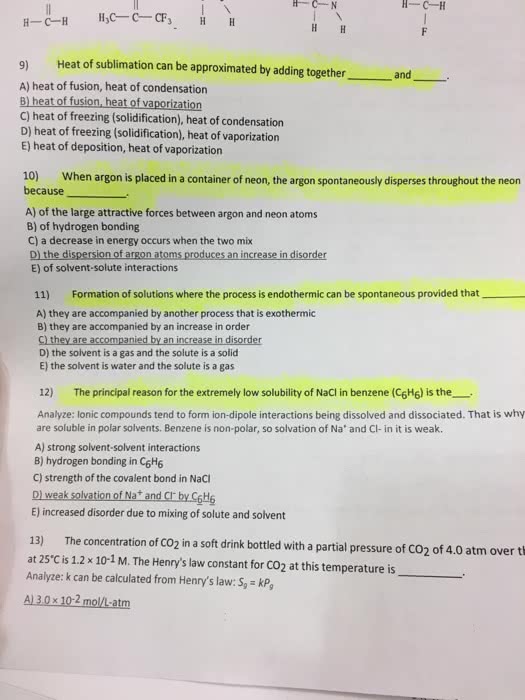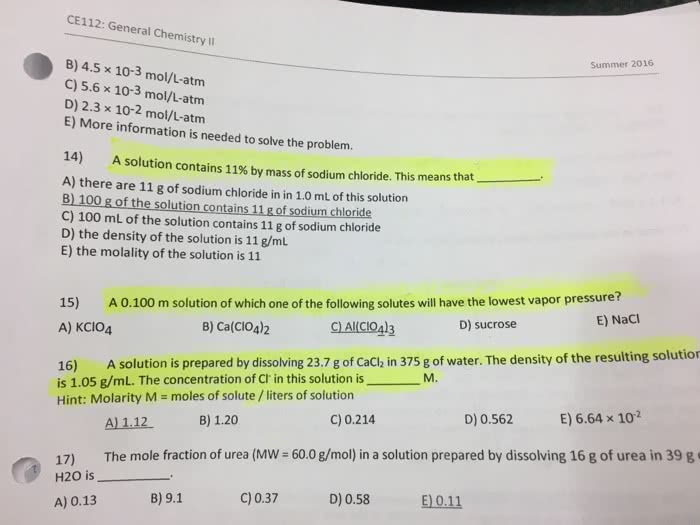CHEM101 Study Guide - Ionic Radius, Lone Pair, Intermolecular Force

77
CHEM101 Full Course Notes
Verified Note
77 documents
Document Summary
Forces that hold molecules together in the condensed phases. Attraction between the charge of the ion and an opposite dipole. Solvation of ionic compounds in a polar solvent (often water). Na+ + x h2o [na(h2o)x]+ (aq) + energy x will vary from ion to ion. Arrange na+, cs+ and mg2+ in order of solvation energy. Ionic radius effect smaller radius stronger force. Molecules will orient to maximize +ve and ve attractions, or minimize like charge repulsion. Attraction by mg is strongest b/c of greater charge and smaller ionic radius (see previous example for na+ vs. Same charge, but na+ is smaller than cs+ (higher in the periodic table). E (mg2+) > e (na+) > e (cs+) Dipole diploe forces become weaker as distance increases. Dipole dipole interaction not important in gases as molecules are far apart. Ordering that results from dipole orientation can cause a substance to persist as a solid or liquid at temperatures higher than expected.


